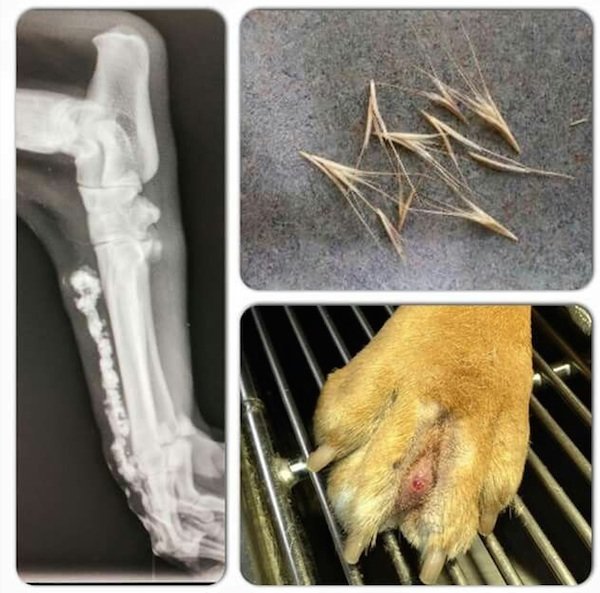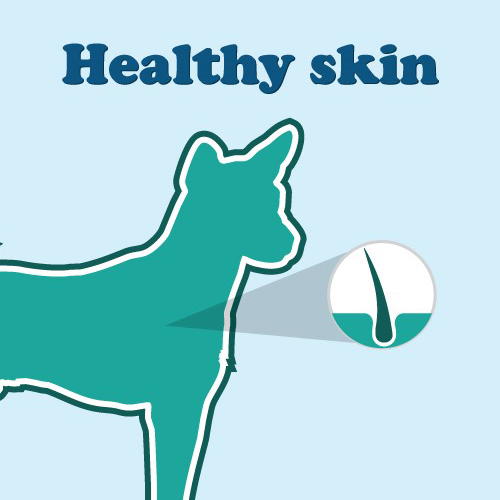By using our website, you agree to the use of cookies as described in our Cookie Policy
Ultimate Pet Owners Guide to Ruptured Cruciate Surgery in Dogs
The Goal
My goal is to give dog owners the most comprehensive, scientifically based information to help them first determine if their beloved dog has cruciate damage, and then to help them decide how to treat the rupture. I am NOT selling any product or supplement so if you see anything for sale, first, it’s not me and second, DON'T BUY IT. This guide will have numerous links to articles and videos that I think are helpful and detail how and why cruciate rupture happens, and what a ruptured cruciate looks like (no blood or gore, promise). Many articles and videos will also explain the various procedures available, however, the field of veterinary medicine is progressing every day and there is a relatively new procedure (at least to America), developed in Europe, that is being used in America but there are not as many articles or videos on this procedure (MMP), although it has been used in Europe successfully for several years. I will provide a brief description of each article and video so you can decide for yourself if you want to read or view it. I will also provide a few scientific abstracts that compare the various procedures so you can let the experts(not your second aunt in Peoria with the blind chihuahua) help you decide which procedure is best for your pet. And if you STILL can’t decide email, me and I’ll have my wife (da boss and the veterinarian in this family look at the x-ray for you).
In addition, I will briefly explain how your dog can first avoid a ruptured cruciate and then explain the riskfactors, symptoms and diagnosis, and describe the most common procedures currently being used inveterinary hospitals across the country today. I will also briefly talk about non-surgical treatment of your dogs ruptured cruciate but because there are so many “options” to not treating I will not get into any ofthem in detail other than to state that there is NO scientific data to support ANY of the countless nonsurgicaloptions available if your dog has a complete cruciate rupture. If I haven’t found a study that exists, please send it my way and I’ll give it a look and ask an expert for their opinion. But please don’t contact me with 'stories' from your great aunt or non-scientific articles written by the 16-year old clerk at your local Petco. Let’s please stick with facts and let science and the experts rule the day. Here’s why - let’s say you ruptured your ACL, would you rely on the cashier at Walgreen’s (no disrespect to the cashier or Walgreens) to diagnose and recommend a treatment for your ruptured cruciate? If so you probably won’t find anything helpful in the guide, so just save your time, stop reading now and no hate mail please, just move on – thanks!
I Didn't Know
Most pet owners probably don’t realize that their dog can rupture their cruciate, but it is the most common orthopedic injury in dogs in America. Why it happens in dogs is still up for debate, but there are contributing factors such as obesity. The other reality is that large and giant bred dogs – labs, rottweilers, goldens, and pitbulls – suffer higher rates of cranial cruciate ligament (CrCL) rupture than small breed dogs. Cruciate rupture can happen in two ways: chronic injury and acute injury. Like humans, acute injury can occur during vigorous activity (weekend warriors playing football) or the dog that only gets occasional strenuous activity like chasing a frisbee in the park. But unlike humans, dogs can also have chronic cruciate damage just from day-to-day wear and tear on their knee joints simply because of the angle of your dog’s knee (I’ve included numerous videos that show this so don’t think that your dog has a defective knee joint, they are all built that way).
Below is a link to my website the has an article written by Lifelearn that nicely describes cruciate ligament rupture in dogs. To access the article follow these simple instructions: Under species select dogs and the under topic select surgical conditions select page three and click on “Cruciate Ligament Rupture in Dogs” and viola http://www.wvah.net/educational-articles/
If the link doesn’t work just go to http://www.wvah.net/ click on more and then educational articles and follow the same directions to find the article. This applies for the other two links listed below as well – thanks.
What can I do to avoid a cruciate rupture in my dog?
The best thing you can do is keep your dog slim and fit. I have mini aussies that run around like crazy all day long over rough terrain and over 21 years and five dogs I have yet to have a ruptured cruciate, but all of the dogs are (were) in great shape, did lots of running every day and were not overweight. Other than that, there is not much you can do. The other reality is that various studies show that somewhere between 30- 50 percent of dogs that rupture one cruciate will likely rupture the other within one or two years – not your fault, it just happens.
As mentioned above there is no definitive cause for a ruptured CrCl in your dog but there are a number ofcontributing factors: obesity, inactivity with occasional strenuous activity, conformation (very straight legged dogs, like pitbulls, put tremendous stress on their knee joint), hormonal imbalances (possibly from early spay or neutering) and inflammatory conditions. The reality is that most cruciate ruptures are not acute but chronic. Simply put, most cruciate rupture is the result of repetitive hyperextension micro-injury to the cranial cruciate ligament which results in long-term degeneration that weaken the fibers over time that finally rupture.
How will I know if my dog has ruptured a cruciate?If your dog has a full tear, you will likely know immediately. Your dog will hold their leg up in a slightly bent position and simply not use it and they will be very uncomfortable and in pain. This is often accompanied with fluid build-up in the joint (or as my wife says effusion). Call your veterinarian immediately and make an appointment. The more difficult diagnosis is a partial tear of the cruciate which can come from moderate activity as a result of chronic wear and tear on the joint as mentioned above. The problem with the initial partial tear is that as an owner you may observe subtle to noticeable occasional lameness that may last for a few days and then go away and return again in a few weeks. As the name implies “chronic” is both progressive and permanent deterioration of the joint cartilage and if left untreated will eventually result in rupture. If your pet has a chronic condition and experiences mild and intermediate lameness your veterinarian may likely say there is no need to perform a surgical repair until more damage is evident and may provide you with NSAIDS and or other supplements to help the joint recover.
Diagnosing a Torn CrCLDogs with CrCL rupture often have a history of a mild rear limb laments some months in the past, which may have resolved (a partial tear or an initial CrCL strain, which had gotten better, but comes back). They present with a persistent, often severe lameness in a rear limb.
What are the causes?
As mentioned above there is no definitive cause for a ruptured CrCl in your dog but there are a number ofcontributing factors: obesity, inactivity with occasional strenuous activity, conformation (very straight legged dogs, like pitbulls, put tremendous stress on their knee joint), hormonal imbalances (possibly from early spay or neutering) and inflammatory conditions. The reality is that most cruciate ruptures are not acute but chronic. Simply put, most cruciate rupture is the result of repetitive hyperextension micro-injury to the cranial cruciate ligament which results in long-term degeneration that weaken the fibers over time that finally rupture.
How will I know if my dog has ruptured a cruciate?If your dog has a full tear, you will likely know immediately. Your dog will hold their leg up in a slightly bent position and simply not use it and they will be very uncomfortable and in pain. This is often accompanied with fluid build-up in the joint (or as my wife says effusion). Call your veterinarian immediately and make an appointment. The more difficult diagnosis is a partial tear of the cruciate which can come from moderate activity as a result of chronic wear and tear on the joint as mentioned above. The problem with the initial partial tear is that as an owner you may observe subtle to noticeable occasional lameness that may last for a few days and then go away and return again in a few weeks. As the name implies “chronic” is both progressive and permanent deterioration of the joint cartilage and if left untreated will eventually result in rupture. If your pet has a chronic condition and experiences mild and intermediate lameness your veterinarian may likely say there is no need to perform a surgical repair until more damage is evident and may provide you with NSAIDS and or other supplements to help the joint recover.
Diagnosing a Torn CrCLDogs with CrCL rupture often have a history of a mild rear limb laments some months in the past, which may have resolved (a partial tear or an initial CrCL strain, which had gotten better, but comes back). They present with a persistent, often severe lameness in a rear limb.
On physical examination:
1. Pain in the stifle joint when tested by your veterinarian
2. Positive “sit test” - that is, when the dog is asked to “Sit”, they are unable to do so squarely with the stifles fully flexed under the pelvis. The painful leg has joint swelling, so the dog sticks the leg out in a “crooked sit”.
3. Increased joint fluid pressure in the stifle, which makes the patellar tendon less easy to palpate physically. This may only be appreciated on radiographs.
4. Thickening of the inside of the stifle joint - called “medial buttressing”.
Radiographs:
- Signs of arthritic changes in the bones of the stifle.
- Evidence of joint fluid swelling
- Absence of any fractures or bone cancer
Treatment Options Your veterinarians may have several options for your pet, but all of them must take into consideration several things: the age of your pet, the general activity of your pet (for example is it a house pet, or an agility champion working dog), your ability as an owner to perform the needed recovery care at home after the surgery, and also your finances, as the options can have very different costs.
1. House Rest and medications for inflammation and pain. This option is most viable in the cat (one who is not too overweight), and in very small dogs. Some dogs seem to manage pretty well with minimal lameness, so this option may be appropriate. It is obviously less expensive, but most individuals will never return to normal function. Research shows that most dogs will have continued long-term lameness when no surgery is performed and get more degenerative arthritis. Research is clear that performing ANY surgery is likely better than no surgery at all, except as noted above.
2. Tightening Procedures
a. Extracapsular Surgical Repair (ECR). Sometimes called Lateral Fabello-Tibial suture, it is a “tightening” procedure for the stifle. This option may be available to your dog with your general practice veterinarian, depending of their experience with orthopedic surgery. We have performed this surgery for over 20 years, and it is still performed even in many universities , and has a long track record of improving lameness even in larger dogs. While degenerative arthritic changes are inevitable with this ligament injury, dogs that have this surgery are likely to be at least 75 to 80% of normal, and most owners are satisfied that the procedure helps a pet dog to perform normal activities and be relatively comfortable in the long-term. This procedure usually involves the use of heavy nylon sutures outside the joint to mimic the function of the ruptured CrCL, stabilizing the stifle joint, and minimizing pain with weight bearing. ECR dogs are slow to weight bear after surgery - 1 to 3 weeks, and ECR relies on the body to scar down or thicken the joint capsule of the stifle over time to provide stability. The suture may break over time, but scar tissue should hold the stifle in an appropriate position for good function after 6 to 8 weeks. This means a return to normal activity over about 8 weeks.
b. Other “Tightening “ Procedures. Procedures such as Fascial Graft Techniques are generally done by older surgeons, and are less common today. Tightrope Procedure is a tightening procedure with a proprietary material which has experienced high rates of surgical infections,and failures, so this clinic no longer performs this procedure.
Here’s a great link on our website that gives a brief description these two procedures. http://www.wvah.net/educational-articles/ Under species select dogs, select topic surgical conditions, select page three and click on Cranial Cruciate Ligament Repair: Extracapsular Repair and TightRope Procedure. If the link doesn’t work just follow the directions above to access the article on my hospital’s website – thanks.
3. Bone-Cutting Procedures
a. Tibial Plateau Leveling Osteotomy(TPLO). Patented by a veterinary surgeon and engineer in Eugene, Oregon, this procedure has become the procedure of choice at least in the USA. Performed almost exclusively by referral Surgeons, this surgical repair for CrCL injury is much more expensive, much more technically difficult, but may also be a better approach to repair for large dogs, or those dogs that aim to go back to some level of athletic performance. The procedure involves calculating the angle of the tibial plateau (the top of the tibia or shin-bone), and cutting the tibia bone and rotating the top of the tibia to correct the instability during weight-bearing, to minimize the excessive forces on the stifle, minimizing pull on the joint capsule, and to attempt to minimize degenerative arthritis in the joint. Controlled studies are now available. There certainly seems to be less arthritis over time, and return to better performance compared to Tightening Procedures. Neither procedure gets the dog back to pre-injury performance, and few individuals are normal again, however, TPLO does seem to get a better consistency of long-term result. As with other bone-cutting procedures, dogs are walking on the leg very quickly after surgery. Because it involves bone cutting of the shaft of the tibia bone, and a thick bone plate on the leg, and time needed to heal the bone, the recovery from surgery is longer than in Tightening procedures, and client compliance on home care is vital. Return to normal activity can be as long as 3 to 4 months waiting for bone healing. While small and medium dogs might benefit from this procedure, it is very large dogs that seem to derive the most benefit from this more expensive procedure.
b. Tibial Tuberosity Advancement (TTA). This procedure was introduced in Europe, and has been performed by some surgeons in the United States over the last about 10 years. It is also a technically challenging bone-cutting procedure that changes the angle of the stifle joint, with a similar mechanical end-point as the TPLO. Moving, or “Advancing” the tibial tuberosity changes the patellar tendon angle and neutralizes the forces on the joint. TTA now has multiple studies that show nearly as good results as with TPLO. Our surgeon has had multiple years of experience with this procedure, and can discuss it with you. It is intermediate in cost, below that of the TPLO, because it does not require referral to a specialty hospital. For large dogs, it is a viable procedure for quick return to weight-bearing and good consistency of result, yet unlike the TPLO, leaves the tibial bone shaft intact for weight bearing after surgery. This procedure has had some increased problems with meniscal lameness months after surgery, averaging 10% meniscal tears causing lameness, but is a stout, strong fixation for very large dogs. Like the TPLO, it is quite invasive, and will take a couple of weeks to recover from the surgery trauma, although dogs will weight bear in 1- 2 days. Dogs with TTA are generally healed in 8 weeks, still less time than the TPLO for return to normal activity.
Here’s a great link on our website that gives a brief description of both the TPLO and TTA procedures. Same directions as above: Page 3 and click on Cranial Cruciate Ligament Repair; Tibial Plateau Leveling Osteotomy and Tibial Tuberosity Advancement http://www.wvah.net/educational-articles/ See note above if link to this article does not work.
c. Modified Maquet Procedure (MMP). This is a modification of the TTA procedure, which has about 30,000 clinical cases in Europe since 2010. We have been performing this procedure for over a year due to lower cost, less invasive tissue trauma, shorter surgery time, and good clinical outcomes. Like the other bone-cutting procedures, large dogs will be quick to weight-bear post-operatively, but we find much less pain due to a smaller incision, and less tissue trauma. This procedure, while still technically challenging, takes the surgeon much less time to perform. Like the TTA, a tibial tuberosity advancement is made, but the use of a patented titanium foam that is more biologically compatible with the bone leads to much quicker healing times, so faster return to function, and a similar 8 week recovery to normal activity as TTA. Later meniscal lameness is reduced to 5% of dogs, comparable to TPLO, and less than traditional TTA’s. But dogs are much less painful than with either of the other bone cutting procedures. Four weeks of very careful walking activity and NO loose activity or running is required, but after 4 weeks, return to brisk walks is allowed, and full function by 8 weeks. Studies have shown 91% of dogs return to “Full Function” which is comparable to both TTA and TPLO in a less expensive procedure.

A word to the wise: While veterinarians can give general expectations of the outcome of dogs, each dog is an individual, and there is always a “bell curve” of outcomes. While we can expect, say a “return to 80% function’” that is a majority of dogs. A few do better, a few could do worse.
So What Does the Scientific Research Say? Truth be known, there is not near as much scientific research in veterinary medicine as there is in human medicine. As a result, one or two good studies are often referenced over and over again in subsequent studies so while it looks like there are numerous studies that confirm a hypothesis, much of the research still relies on one or two pieces of research. For example, this study, “A Review of extra-articular prosthetic stabilization of the cranial cruciate ligament-deficient stifle” by C.A. Tonks, D.D. Lewis and A. Pozzi
https://www.orthovet.org/sites/default/files/vcot-full-paper/VCOT_2011_issue_OVSS_june.pdf/
refers to research done by Conzemius MG, Evans RB, Besancon MF, et al done in 2005 and another article published February 3, 2010 by Kevin K. Au, Wanda J. Gordon-Evans and Dianne Dunning University of Illinois at Urbana-Champaign.
While orthopedic specialists around the country will probably to a person recommend the TPLO procedure for all dogs, the above research does not support that belief. Both of the above papers compare the extracap procedure with the TPLO procedure (TTA was not being performed widely in 2005 so not studied as much) and the results were similar – no significant difference between the two procedures. Let me quote directly from the Kevin K. Au et. al. study.
Results – Thirty-five dogs had LFS( extra cap) and 30 dogs had TPLO. Radiographic OA scores were significantly increased at 24 months compared with preoperative scores in all dogs (i.e. they all got arthritis in the surgery leg). Radiographic OA scores preoperatively and at 24 months were not significantly different between treatment groups. PVF (peak vertical force) was significantly increased from preoperative to 24 months among both treatment groups but not significantly different between treatment groups preoperatively or at 3,5,7, weeks, 6 or 24 months.
Conclusion – No significant difference in outcome as determined by ground reaction forces (the gold standard in determining this –foot pressure on a plate) or radiographic OA scores were found between dogs with CrCL injury treated with LFS (extra-cap) or TPLO.
Clinical relevance – LFS and TPLO remain good options for stabilizing stifles and CrCL injury with all dogs showing significant functional improvement. This study does not support the superiority of either surgical technique.
This study studied both medium and large breed dogs – so an apples-to-apples comparison. The other study quoted above compared small breed dogs repaired with extra-cap procedure with large dogs done with TPLO. Again, the results were similar – no significant difference between the two treatment groups - BUT because the treatment groups were NOT the same, the study, in fact, compared the proverbial “apple to the orange”. This does not change the results but makes the comparison more difficult to assess.
Notwithstanding the research it IS believed by the veterinary profession as a whole that the extracap procedure should be performed on cats and dogs weighing less than 20kg and the bone cutting procedures should be performed on larger dogs. I say this because in larger breeds those dogs can put enough stress on their joint to snap the 80lb test fishing line that is used to secure their knee even after enough scare tissue has been grown to tighten the joint. Another factor is that most if not all studies only look at dogs 24 months post-operatively to come to a conclusion about efficacy. But any of us that have broken a bone or had an orthopedic procedure knows that 20 years after a surgical procedure arthritis sets in and it can be painful. With an extra-cap procedure arthritis is inevitable and is more severe than in bone-cutting procedures. This may not be as important if your dog is older when surgery is performed but certainly something to consider if your dog is young and has a long life ahead. As the table above shows pain from arthritic changes can be mitigated by NSAIDS (pain medications) but they are relatively expensive, can cause problems in some dogs and will require routine bloodwork.
The bottom line is this, if money is absolutely no concern, then a TPLO or TTA (according to the America College of Orthopedic Surgeons) would be the best choice for a young, active dog over 20kg. But as the research shows, extra-cap procedures, in the hands of a skilled practitioner that has done 100’s of them, can also be a very effective procedure in all cases. Optimally you would opt for an extra-cap procedure on a dog under 20kg, or on an older, sedentary dog that would not put too much stress on their joint and not live so long as to develop too much arthritis. For those owners that don’t feel like spending close to $5,000 on a TPLO procedure, the much less expensive MMP procedure (more than 30,000 procedures have been performed in Europe with much success) provides almost the same level of function post-operatively, is less invasive and has a shorter recover time. While this procedure is not done everywhere, there are practitioners across the country that are proficient at this procedure. Most of the veterinarians that perform this surgery are general practitioners and perform this procedure because it is much less expensive than TPLO’s (the choice of most board certified specialist in the country) and they want to give their clients an alternative that is almost as effective as a TPLO at likely half the cost of that procedure.
The Non-Surgical Approach
As mentioned above and I will repeat it, house rest and medications for inflammation and pain is most viable in the cat (one who is not too overweight), and in very small dogs. Some dogs seem to manage pretty well with minimal lameness, so this option may be appropriate. It is obviously less expensive, but most individuals will never return to normal function. Research shows that most dogs will have continued long-term lameness when no surgery is performed and get more degenerative arthritis. Research is clear that performing ANY surgery is likely better than no surgery at all except as noted above. For larger dogs a non-surgical approach for a complete cruciate rupture is not at all recommended as the dog will likely never regain full range of motion, never return to normal function and have much more arthritic pain than without surgery. But keep in mind, the non-surgical approach does not mean doing nothing and letting your dog heal on its own. For best results “conservative measures” should include use of pain medications and antiinflammatory medications like NSAIDS, some form of physical rehabilitation and possibly nutraceuticals. If all this is done outcomes can be quite good, but likely no less expensive than an extra-capsular surgical repair and will require much more work on the owner’s part.
The internet is FULL of alternative solutions from house rest, to a red-light therapy, to acupuncture and chiropractic (my wife is certified in both but does not recommend either as a replacement for surgery) to an assortment of supplements and pain medications. The reality is, in the long run – say 6 to 9 months - your pet will likely develop enough scar tissue to stabilize the knee joint to return to somewhat “normal” walking. When this day arrives owners of the non-surgical approach will conclude that their “alternative” approach worked. It might have, to a degree, but there are things to consider. Your pet was likely painful for an extended period of time, one can only hope that the scar tissue stabilized the joint at the correct angle, the pet will likely have much more severe arthritis and sooner than with a surgical procedure and the knee still may not be as stable as with surgery. In addition, the pet will likely have a more limited range of motion, will have less functionality of the joint and wil
l likely have a limp. Cats and smaller dogs can do without surgery, but likely would benefit from daily supplements (there are numerous good products for joint function just ask your vet, not that 16 year-old kid at Petco!!!) and pain and anti-inflammatory products such as Rimadyl or Metacam, which can be costly over time.
Another alternative I have seen are the use of knee braces. The issues I have with braces are numerous: 1. They HAVE to be properly fitted, therefore you just can’t buy one on the internet and “hope” it will fit and help; 2. It HAS to be worn all the time, from the minute your pet wakes up until they are put to bed in their kennel at night; 3. the braces I have seen that are substantial enough to support the knee of a medium to large bred dog are expensive - $850 is not unusual; 4. Your dog may still be in some pain and require pain meds and anti-inflammatories. The end result is your compliance is imperative, the costs with supplements and pain meds may not be much different than surgery. Braces are likely only a good idea for dogs than cannot go under general anesthesia or pets that are too old to risk a surgical procedure.
I will include just one article I found on the internet regarding a non-surgical solution to a ruptured cruciate in dogs to illustrate the difficulties for owners of relying on non-professional help. www.wikihow.com/Heal-a-Torn-Dog-ACL-Without-Surgery/
In point 1 they state that a dog under 20kg may not be a good candidate for surgery – incorrect. In fact, dogs under 20kg are excellent candidates for the extra-cap procedure, the least expensive and least intrusive of the surgical procedures commonly performed. Point 2 is good, keep your pet’s weight down – good advice. Point 3 restrict activity – good idea. But other information is incorrect, NSAIDS don’t “help” heal a torn ligament (helps with strained but not torn ligaments), the article talks about the use of braces BUT the illustration has the brace on the ANKLE of the dog NOT the knee. I know they mean well and make some good points but it is simply best to have this discussion with your veterinarian and then you can decide what to do.
Here are some of the articles I have read that you may find helpful when deciding what to do if your dog (or cat) has ruptured a cruciate. I’ll first start off with an article from the American College of Veterinary Surgeons. This is the group that certifies all of the Board Certified Surgeons across the country.
https://www.acvs.org/small-animal/cranial-cruciate-ligament-disease/
The article provides a good description of the bone cutting TPLO and TTA procedures but has no discussion of the MMP procedure probably because of the newness of this procedure. They note that “the TTA and TPLO share similar advantages and disadvantages…and the decision between TPLO and TTA is based purely on the opinion of your surgeon and their personal technical experience...to date, no published data supports one technique being superior to the other.” They also describe the extra-capsular (extra-cap) and note that “many surgeons reserve suture techniques for small breed, older, and/or inactive dogs as larger and younger patient have more complications.” Of interest, they also discuss knee/bracing/orthotics but note that “there is no published data that supports its viability as a reasonable treatment in dogs with CrCLD. Much of the enthusiasm for dog knee bracing is extrapolated from their successful use in humans with ACL injuries.”
Here’s a short article written by Ernest Ward, DVM (a well-known celebrity in veterinary medicine) and Robin Downing, DVM, CVPP, DAAPM. The article quickly goes through the two most common options recommended by board certified surgeons (Dr. Downing) and provides one of the best descriptions of both the TPLO and TTA procedures – brief and understandable for us lay people - and has a few pictures illustrating the procedure.
https://vcahospitals.com/know-your-pet/cranial-cruciate-ligament-repair/
One of most respected veterinary hospitals in the country, The Animal Medical Center in New York City have some great articles on their blog on TPLO and TTA procedures and a general discussion on cranial cruciate ligament disease in dogs. The links are listed in the order mentioned above. These articles can also be easily shared off this site as well.
http://www.amcny.org/tag/tplo/
http://www.amcny.org/tag/cruciate-ligament/
If you are interested to know what veterinarians say to their colleagues, here’s an article from a trade magazine written by a board certified surgeon on cranial cruciate ligament repair. Short and sweet but thought you’d like to hear the inside skinny.
http://veterinarymedicine.dvm360.com/cranial-cruciate-ligament-repair-one-size-does-not-fit-all/
The next article I will include is authored by Dr. James L. Voss of the Veterinary Teaching Hospital of Colorado State University. Dr. Voss also discusses the extra-cap, TPLO and TTA procedures but this article is of note because he also addresses non-surgical options and writes, “In general, we do not advise this therapy as the ideal form of treatment, but it may be appropriate for individual dogs due to some combination of their very small size, inactive lifestyle…” Dr. Voss makes no recommendations or comments on the bone-cutting procedures but notes that the extra-cap procedure “seem to work reasonably well in small breeds and inactive dogs when performed by an experienced surgeon.”
http://csu-cvmbs.colostate.edu/Documents/orthopaedics-cruciate-ligament.pdf
The next article is from Fitzpatrick Referrals a referral hospital in Surrey, Great Britain. This article gives a nice summary of the causes, symptoms and diagnosis of CrCL and has great illustrations of what is happening inside the affected joint. The article also discusses TPLO, TTA and extra-cap procedures and concludes that, “The decision of whether TPLO or TTA is most appropriate is made based on the anatomy of the individual. In many cases, either surgery would constitute a suitable and appropriate choice.”
https://www.fitzpatrickreferrals.co.uk/orthopaedic/cranial-cruciate-ligament-injury/
This next article provides a good illustration of the hardware used in the MMP procedure and provides a good timeline for recovery from the procedure. Note that this is also a British hospital as the procedure is quite common over in Europe and around the world.
http://www.abbottswayvet.co.nz/mmp-for-cranial-cruciate-ligament-surgery/
The next article is more typical of the articles found on the internet regarding veterinary medicine issues. While the article is well written and mostly accurate, there are usually pop-up ads for nutraceuticals claiming to “rebuild joints, prevent injury and heal faster” information that does not add to the discussion about the issue at hand but in fact likely confuses the consumer regarding how to both prevent and heal the injury. Here is just one example of inaccurate information: “Studies have shown that dogs weighting less than 25 pounds can experience a full recovery from ligament damage without surgery.” The article does NOT quote the study because there are NO scientific studies that make that claim. So, while much of the article is accurate there are glaring errors in some of the assertions made. In addition, the descriptions of the procedures are extremely brief and do not give the pet owner any idea of what is really involved, what are the benefits and drawbacks of each procedure and which procedure is best for their pet. This is typical of most non-scientific articles that pet owners read.
https://dogkneeinjury.com/cruciate-ligament-injury-in-dogs/
There are also articles that fall somewhere in between the scientific papers and those that are suggesting studies where there are no studies. A good example are the articles in PETMD which are advertised as “vet authorized and vet approved.” Again, these articles are well written and mostly accurate but can make claims that require more explanation than the article provides. For example, in the article listed below this statement stands out to me, “Dogs less than 33 lbs (15kg) may be treated conservatively as outpatients; 65% improve or are normal within six months.” This statement makes it sound like doing nothing in smaller dogs works out fine 65% of the time, but what the article forgets to mention that this is likely only possible with a lot of caveats: lots of rest, use of pain meds and anti-inflammatories; extensive rehabilitation in the form of acupuncture, water treadmill treatments, etc.
This article also fails to mention that these dogs likely will never truly return to pre- rupture performance, will experience earlier onset of arthritis compared to surgically repaired dogs, and will likely have limited range of motion. These are important consequences of conservative treatment that need to be discussed if the dog owner is to make an educated decision about how to treat their pet. In my humble opinion, this article does a disservice to the pet owner looking to make an important decision about their pet’s long-term well-being.
https://www.petmd.com/dog/conditions/musculoskeletal/c_dg_cranial_cruciate_ligament/
These are just a small fraction of the articles available on the web regarding the treatment of CrCL in dogs but I believe a representative example of what the pet owner will find. My goal is make the pet owner “aware” that not all articles are helpful or give them the complete story about how to treat their pet for almost any condition. Keep in mind that almost everyone on the web has an ulterior motive than what appears obvious. I’m doing this so that people visit my veterinary hospital’s web site. But I’m also doing it because I believe that pet owners need to make informed decisions about their pet’s health.
Before I summarize this guide to ruptures cruciate surgery in dog’s I’d like to recommend a few videos that nicely illustrate the procedures I’ve talked about. Keep in mind that the individuals presenting also have a point of view to push. Board certified surgeons firmly believe that the TPLO procedure is the only way to go if your dog had ruptured it’s cruciate. Remember we all have some reason to be on the web other than altruism.
With that said here’s the first video from a board certified surgeon describing the TPLO procedure.
https://www.youtube.com/watch?v=hGIxCPekppk/
Dr. Bauer also has other videos that will explain ACL injury and others detailing TPLO healing and recovery which are very helpful for any pet owner considering any type of cruciate repair surgery. This next video discusses the TTA procedure, followed by a video describing the extra-capsular procedure.
https://www.youtube.com/watch?v=j7b1RChDIE8/TTA video
https://www.youtube.com/watch?v=3oJyS2SSqt8/ Extra-cap video
Sadly, I could only find two videos about the MMP procedure, one brief video from a veterinarian in Britain again and another on the web site of the company that provides the hardware for the MMP procedure. I have listed both below so you can see how this procedure is performed. This is also a bone-cutting procedure but is less invasive than either the TPLO or TTA procedures, takes less time and is less expensive and has similar outcomes to the TPLO and TTA procedures.
https://www.youtube.com/watch?v=gwMczy6GzPk/ UK video
https://www.youtube.com/watch?v=BLTw_k0z8jY/ OrthoMed video
Summary
For the most part, complete and acute CrCL ruptures are relatively easy to diagnose, but partial tears, especially if they are bilateral can be mistaken for hip dysplasia, another common problem in large breed dogs like labs. Most ruptures are the result of chronic ligament damage that result in complete rupture as a result of moderate activity. Your best bet for an accurate diagnosis is with your veterinarian. While most veterinarians do not perform the surgeries, most should be able to diagnosis the problem. If not, just go to a veterinarian that routinely repairs them as they also probably see more and are better able to diagnosis the problem.
When deciding what to do if your dog does have a ruptured cruciate, take in account several things: the age and general activity of your dog, your finances and the recommendation of your veterinarian. There are numerous surgical options available and if your veterinarian is not familiar with the range of options, visit one that is, to determine the best option for your dog. For small or older inactive dogs that may pose a high surgical risk, the non-surgical approach may be an option, but it should be accompanied with other therapies such as acupuncture, use of NSAIDS and anti-inflammatories, nutraceuticals, and other rehabilitation therapies such as water-treadmill or swimming pool therapy. Also, be aware that non-surgical approaches have consequences such as earlier onset of arthritis, limited range of motion and less functionality.
With respect to surgical options there are probably four that are commonly available in every major center in the country: TPLO, TTA, MMP and extra-capsular repair. While the vast major of Board Certified Surgeons will tell you that the TPLO is the gold standard, research (and their own certifying body) shows no difference between the efficacy of the TPLO and TTA procedures, so the choice will be made based the anatomy of your dog and the experience and comfort level and experience with each procedure of your veterinarian. The other bone-cutting procedure, the MMP, also has similar results to the TPLO and TTA procedures, is less invasive but is not as widely available in America but has been widely used across Europe, New Zealand and Australia. The oldest of the procedures, the extra-capsular repair has been performed on tens of thousands of dogs for the last four decades, and in the hands of an experienced practitioner, according to the research paper noted above, has been shown to provide similar results to the TPLO procedure. I would recommend this procedure for smaller dogs (and all but the most obese of cats) and older inactive dogs as a completely acceptable alternative. I hope this helps all dog owners out there that are looking for answers when they suspect their pet has ruptured cruciate.
The final reality that veterinarians must address with clients is the risk inherent with any surgical procedure. Anesthesia, while much safer than 20 years ago, does have some small risk of complications, including death.
All of the procedures discussed here have individual risk of not doing “as well as average.” Because of this, owners that don’t wish to risk these issues, do have the option of conservative management.
Good luck and if any of you out there find any great articles or references please send them my way so I can continue to update and make this guide more helpful.
- John Maddigan
Plateau Veterinary Hospital & Orthopedic Center
Willamette Valley Animal Hospitals
‹ Back









Comments